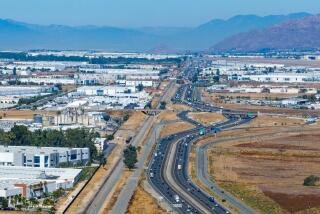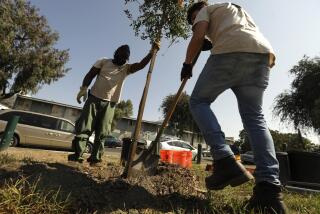Lighting, Landscaping Assessment Districts
- Share via
The Landscape and Lighting District: The Growth Industry of the ‘90s.
Clearly the capacity of our cities and special districts to meet the fiscal demands of a slow-growth economy is being severely tested. Couple that with the limits imposed by the voter-approved Proposition 13, and many cities, including Rancho Palos Verdes, have determined that some other way of funding these needs is vital for its survival. Enter the Landscape and Lighting Act of 1972.
The growth industry of the ‘90s, as far as municipal government is concerned, is the use of the “benefit assessment district” to enhance revenues without the need for voter approval. Boilerplate consultant engineering and public relations firms can assemble the pieces of the assessment district in as little time as two months, where an election to determine the fate of a tax increase can take up to a year in the planning and execution process. Elections are also very “iffy” propositions and expensive as well. It’s obviously much more expedient to determine a tax, collect the tax and spend the revenue without chancing the whims of the will of the people.
Let’s examine the differences between a voter-approved parcel tax and the landscape and lighting benefit assessment district. The voter approved parcel tax would be collected for a stipulated number of years to finance a stipulated project and for a stipulated amount. Generally, the term is five years. The benefit assessment district is determined by the local agency/elected officials only, has no sunset clause, more projects can be added at any time without the consent of the electorate, and the amount of the tax can vary higher or lower at the desire of the local agency/elected council. Additionally, notice of the formation in each subsequent year only has to be published in regional news media like the Peninsula News, and if the assessment becomes unpopular, it would take 50% of the city’s residential and commercial parcel units owners plus one to appear at a public meeting to eliminate the tax. In Rancho Palos Verdes that number would be nearly 22,000 citizens!
After the benefit assessment district is formed, only projects that are connected with landscaping and lighting can be included in the lien list that is submitted to the county tax collector. Here, creativity is the key for the successful local agency to expand a greater and greater amount of their revenue needs into “landscape and lighting” budget requirements, freeing up general revenue for other worthwhile projects. For new projects and personnel to be added to the local agency’s agenda, the primary test will be whether it will meet the most remote budgetary definition of what constitutes a landscape or lighting expenditure.
The benefit assessment district is not a new vehicle to the Peninsula. In 1982 the Miraleste Recreation and Parks District instituted the scheme and today the assessment is over 300% higher than it was at the outset--or $118 per parcel. Commensurate increases in the level of landscape maintenance have not occurred. Quite the contrary!
The state of California is forcing each local agency to pursue these methods in revenue enhancement in order to continue the high level of services that we all expect. But is taxation without the public’s consent as to the amount or duration what the voters expect in the post Proposition 13 era? I think not. Let the voters decide the amount of assessment, if necessary, and the length of time the tax is to be imposed.
MICHAEL L. GRAY
Rolling Hills
More to Read
Sign up for Essential California
The most important California stories and recommendations in your inbox every morning.
You may occasionally receive promotional content from the Los Angeles Times.













